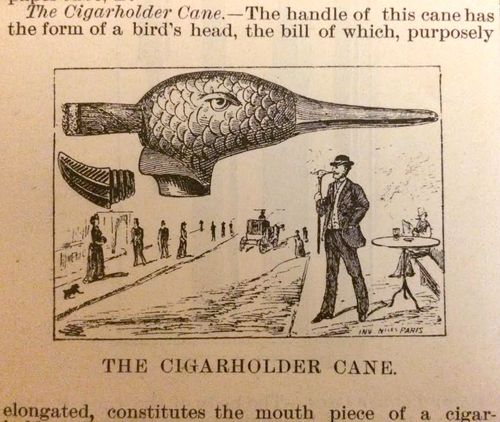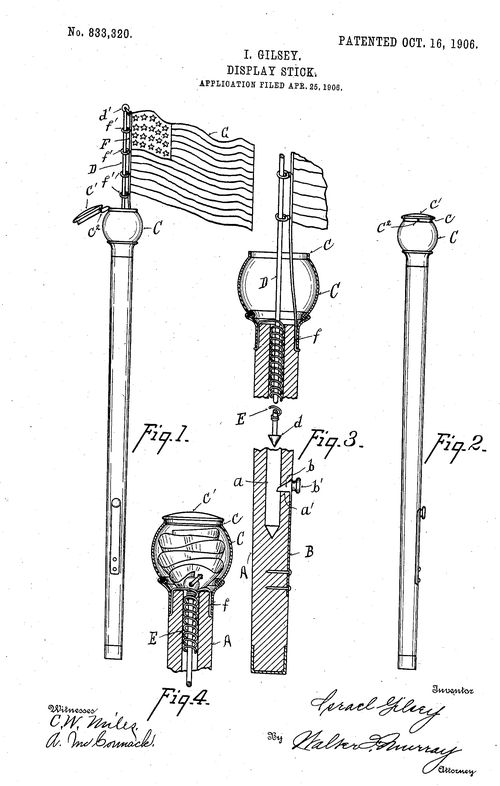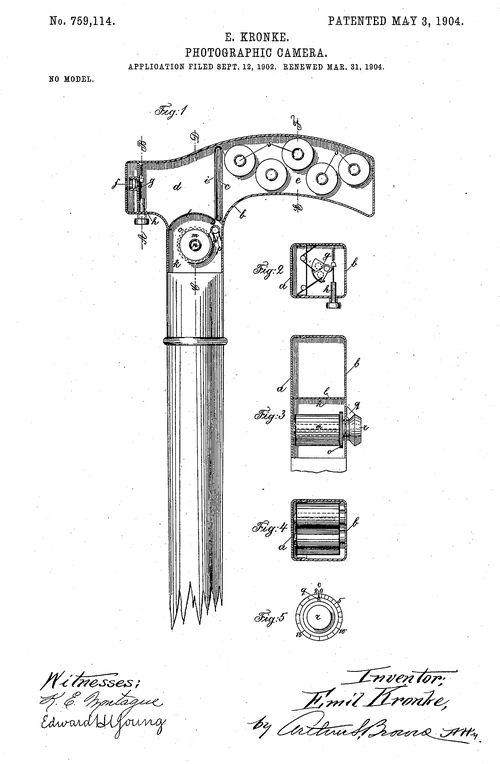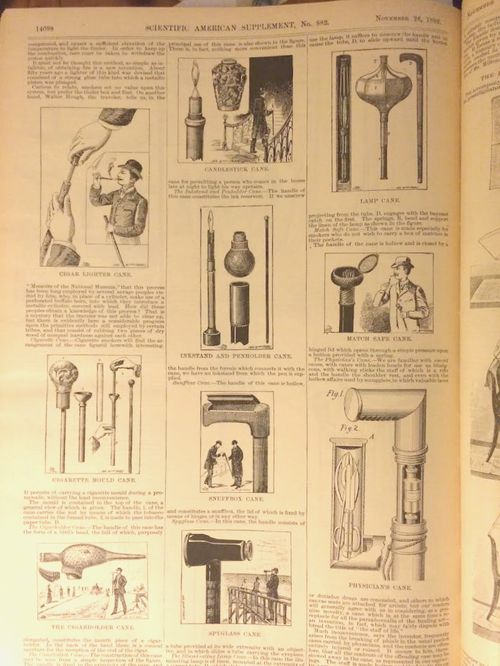JF Ptak Science Books Quick Post
The walking stick continued to be a "thing"--a gentleman's pursuit of gentlemanliness, of refinement, or culture, or style, and so on--deep into the 19th century. And as we can see in this sample from the Scientific American Supplement for November 26, 1892, people were interested not only in sticks but also in what other things the cane could do for them while perhaps aiding them in walking. Some ideas are sort of good, while others, not so. An example of the later might be the following--using your cane head as a cigar holder allowing you to smoke your stogie through the beak of a duck:
Other hidden additions to the cane were not such bad ideas, like the emergency supplies for a physician; and I guess if you going to carrying a cane for show or if you actually needed a cane to help your walk, having the cane serve another purpose was probably a good idea, or at the very least gave a cane-maker something to do beyond making a simple cane.
I did have a quick look at patents for walking sticks for 1875-1925 and found that there were a number of varied patents for walking sticks with umbrellas and stools lodged inside them, which makes sense. There were a number of stick-additions that you'd expect--like that for guns, booze holders, and rulers--and then a number of unexpected contrivances, like music stands, pool cues, fishing rods, soil testers, musical instruments, cameras, lamps, a combo gun-umbrella-fishing rod, and one of my favorites, the flag pole:
[Source, Google Patents: https://www.google.com/patents/US833320?dq=walking+stick&hl=en&sa=X&ved=0ahUKEwj3xb3BlpvNAhUGTSYKHeJ6ADMQ6wEINDAD]
And the walking stick camera:
https://www.google.com/patents/US759114?dq=walking+stick&hl=en&sa=X&ved=0ahUKEwiJtunTmJvNAhWEOCYKHT3SBBAQ6wEIUDAH







Comments